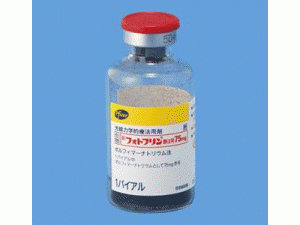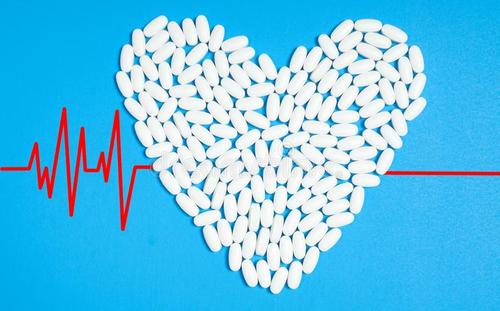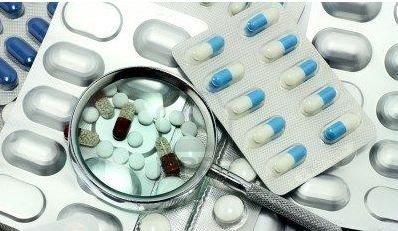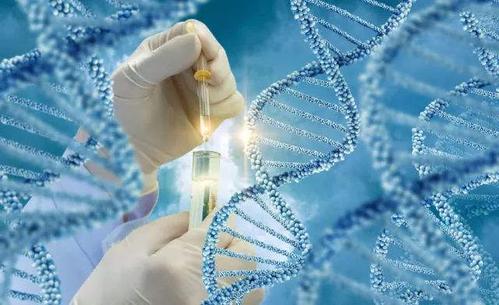卟吩姆钠,卟吩姆钠注射剂,フォトフリン静注用(PHOTOFRIN 75mg vial)
 药店国别:无
产地国家:日本
处方药:是
所属类别: 75毫克/瓶
包装规格: 75毫克/瓶
计价单位:瓶
生产厂家中文参考译名:无
生产厂家英文名:Pfizer
原产地英文商品名:PHOTOFRIN INJECTION(フォトフリン静注用)75mg/vial
原产地英文药品名:Porfimer sodium
中文参考商品译名:PHOTOFRIN(フォトフリン静注用)75毫克/瓶
中文参考药品译名:卟吩姆钠
曾用名:无
药店国别:无
产地国家:日本
处方药:是
所属类别: 75毫克/瓶
包装规格: 75毫克/瓶
计价单位:瓶
生产厂家中文参考译名:无
生产厂家英文名:Pfizer
原产地英文商品名:PHOTOFRIN INJECTION(フォトフリン静注用)75mg/vial
原产地英文药品名:Porfimer sodium
中文参考商品译名:PHOTOFRIN(フォトフリン静注用)75毫克/瓶
中文参考药品译名:卟吩姆钠
曾用名:无
简介
部份中文卟吩姆钠处方资料(仅供参考) 药品英文名:Porfimer Sodium 药品别名:泡非美钠、Photofrin药物剂型冻干粉 针剂:75mg。 药理作用 本品是以猪血中的卟啉二盐酸盐为原料合成的卟啉醚及酯结合的聚合物,是对肿瘤有亲和性和光敏物质,与特定波长的激光并用,作为抗肿瘤的新疗法。 静脉给予本品后,肿瘤细胞比正常细胞摄取本品更多,而且滞留性也好。对本品滞留的肿瘤部位进行光照,本品吸收光能而被激活。光能可使组织中的氧转变成活性氧,活性氧抑制线粒体的酶系统而抑制细胞内呼吸,引起肿瘤细胞变性坏死。 药动学药物吸收呈双相性。人血中t1/2长达250h,提示有蓄积性。 适应证 不能用手术及其他根治疗法的肺癌、子宫颈癌或需非手术治疗的患者,在内镜下能观察到病灶的全貌、可能进行激光照射的下列疾病:早期肺癌(0期或Ⅰ期)、浅表性食管癌、浅表性早期胃癌、宫颈癌初期及发育异常。 不良反应:有抗癌用光敏剂的共同性不良反应,遵医嘱酌情应用。 用法用量 静脉注射:2mg/kg,静脉注射后48~72h后以激光照射病灶。先用5%葡萄糖注射液溶解。英文版说明
Photofrin (Porfimer Sodium)Indications and DosageINDICATIONS AND USAGEEsophageal CancerPHOTOFRIN® is indicated for the palliation of patients with completely obstructing esophageal cancer, or of patients with partially obstructing esophageal cancer who, in the opinion of their physician, cannot be satisfactorily treated with Nd:YAG laser therapy.Endobronchial CancerPHOTOFRIN is indicated for the treatment of microinvasive endobronchial non-small-cell lung cancer (NSCLC) in patients for whom surgery and radiotherapy are not indicated.PHOTOFRIN is indicated for the reduction of obstruction and palliation of symptoms in patients with completely or partially obstructing endobronchial NSCLC.High-Grade Dysplasia in Barrett's EsophagusPHOTOFRIN is indicated for the ablation of high-grade dysplasia in Barrett's esophagus patients who do not undergo esophagectomy.DOSAGE AND ADMINISTRATIONPhotodynamic therapy (PDT) with PHOTOFRIN is a two- stage process requiring administration of both drug and light. The first stage of PDT is the intravenous injection of PHOTOFRIN at 2 mg/kg. Illumination with laser light 40–50 hours following injection with PHOTOFRIN constitutes the second stage of therapy. A second laser light application may be given 96-120 hours after injection [see Dosage and Administration]. In clinical studies on endobronchial cancer, debridement via endoscopy was required 2-3 days after the initial light application. Standard endoscopic techniques are used for light administration and debridement. Practitioners should be fully familiar with the patient's condition and trained in the safe and efficacious treatment of esophageal or endobronchial cancer, or high-grade dysplasia (HGD) in Barrett's esophagus (BE) using PDT with PHOTOFRIN and associated light delivery devices. PDT with PHOTOFRIN should be applied only in those facilities properly equipped for the procedure.The laser system must be approved for delivery of a stable power output at a wavelength of 630 ± 3 nm. Light is delivered to the tumor by cylindrical OPTIGUIDE™ fiber optic diffusers passed through the operating channel of an endoscope/bronchoscope. Instructions for use of the fiber optic and the selected laser system should be read carefully before use. OPTIGUIDE™ cylindrical diffusers are available in several lengths. The choice of diffuser tip length depends on the length of the tumor or Barrett's mucosa to be treated. Diffuser length should be sized to avoid exposure of nonmalignant tissue to light and to prevent overlapping of previously treated malignant tissue. Refer to the OPTIGUIDE™ instructions for use for complete instructions concerning the fiber optic diffuser.PHOTOFRINPHOTOFRIN should be administered as a single slow intravenous injection over 3 to 5 minutes at 2 mg/kg of body weight. Reconstitute each vial of PHOTOFRIN with 31.8 mL of either 5% Dextrose Injection (USP) or 0.9% Sodium Chloride Injection (USP), resulting in a final concentration of 2.5 mg/mL. Shake well until dissolved. Do not mix PHOTOFRIN with other drugs in the same solution. PHOTOFRIN, reconstituted with 5% Dextrose Injection (USP) or with 0.9% Sodium Chloride Injection (USP), has a pH in the range of 7 to 8. PHOTOFRIN has been formulated with an overage to deliver the 75 mg labeled quantity. The reconstituted product should be protected from bright light and used immediately. Reconstituted PHOTOFRIN is an opaque solution, in which detection of particulate matter by visual inspection is extremely difficult. Reconstituted PHOTOFRIN, however, like all parenteral drug products, should be inspected visually for particulate matter and discoloration prior to administration whenever solution and container permit.Precautions should be taken to prevent extravasation at the injection site. If extravasation occurs, care must be taken to protect the area from light. There is no known benefit from injecting the extravasation site with another substance.PhotoactivationEsophageal CancerInitiate 630 nm wavelength laser light delivery to the patient 40–50 hours following injection with PHOTOFRIN. A second laser light treatment may be given as early as 96 hours or as late as 120 hours after the initial injection with PHOTOFRIN. No further injection of PHOTOFRIN should be given for such retreatment with laser light. Before providing a second laser light treatment, the residual tumor may be debrided. The debridement is optional since the residua will be removed naturally by peristaltic action of the esophagus. Vigorous debridement may cause tumor bleeding.Photoactivation of PHOTOFRIN is controlled by the total light dose delivered. In the treatment of esophageal cancer, a light dose of 300 Joules/cm (J/cm) of diffuser length should be delivered. The total power output at the fiber tip is set to deliver the appropriate light dose using exposure times of 12 minutes and 30 seconds.For the treatment of esophageal cancer, patients may receive a second course of PDT a minimum of 30 days after the initial therapy; up to three courses of PDT (each separated by a minimum of 30 days) can be given. Before each course of treatment, patients with esophageal cancer should be eva luated for the presence of a tracheoesophageal or bronchoesophageal fistula [see Contraindications (4)]. All patients should be eva luated for the possibility that the tumor may be eroding into a major blood vessel [see Contraindications (4)].Endobronchial CancerInitiate 630 nm wavelength laser light delivery to the patient 40–50 hours following injection with PHOTOFRIN. A second laser light treatment may be given as early as 96 hours or as late as 120 hours after the initial injection with PHOTOFRIN. No further injection of PHOTOFRIN should be given for such retreatment with laser light. Before providing a second laser light treatment, the residual tumor should be debrided. Vigorous debridement may cause tumor bleeding. For endobronchial tumors, debridement of necrotic tissue should be discontinued when the volume of bleeding increases, as this may indicate that debridement has gone beyond the zone of the PDT effect.Photoactivation of PHOTOFRIN is controlled by the total light dose delivered. In the treatment of endobronchial cancer, a light dose of 200 J/cm of diffuser length should be delivered. The total power output at the fiber tip is set to deliver the appropriate light dose using exposure times of 8 minutes and 20 seconds. For noncircumferential endobronchial tumors that are soft enough to penetrate, interstitial fiber placement is preferred to intraluminal activation, since this method produces better efficacy and results in less exposure of the normal bronchial mucosa to light. It is important to perform a debridement 2 to 3 days after each light administration to minimize the potential for obstruction caused by necrotic debris [see Warnings and Precautions].For the treatment of endobronchial cancer, patients may receive a second course of PDT a minimum of 30 days after the initial therapy; up to three courses of PDT (each separated by a minimum of 30 days) can be given. In patients with endobronchial lesions who have recently undergone radiotherapy, sufficient time (approximately 4 weeks) should be allowed between the therapies to ensure that the acute inflammation produced by radiotherapy has subsided prior to PDT [see Warnings and Precautions]. All patients should be eva luated for the possibility that the tumor may be eroding into a major blood vessel [see Contraindications (4) ].High-Grade Dysplasia (HGD) in Barrett's Esophagus (BE)Prior to initiating treatment with PHOTOFRIN PDT, the diagnosis of HGD in BE should be confirmed by an expert GI pathologist.Approximately 40-50 hours after PHOTOFRIN administration light should be delivered by a X-Cell Photodynamic Therapy (PDT) Balloon with Fiber Optic Diffuser. The choice of fiber optic/balloon diffuser combination will depend on the length of Barrett's mucosa to be treated (Table 1).Photoactivation is controlled by the total light dose delivered. The objective is to expose and treat all areas of HGD and the entire length of BE. The light dose administered will be 130 J/cm of diffuser length using a centering balloon. Based on the randomized clinical study, acceptable light intensity for the balloon/diffuser combinations range from 200-270 mW/cm of diffuser length.To calculate the light dose, the following specific light dosimetry equation applies for all fiber optic diffusers:Light Dose (J/cm) = Power Output From Diffuser (W) x Treatment Time (s) / Diffuser Length (cm)Table 2 provides the settings that will be used to deliver the dose within the shortest time (light intensity of 270 mW/cm). A second option (light intensity of 200 mW/cm) has also been included where necessary to accommodate lasers with a total capacity that does not exceed 2.5 W.Short fiber diffusers (≤2.5 cm) are to be used to pretreat nodules with 50 J/cm of diffuser length prior to regular balloon treatment in the first laser light session or for the treatment of "skip" areas (i.e., an area that does not show sufficient mucosal response) after the first light session. For this treatment, the fiber optic diffuser is used without a centering balloon, and a light intensity of 400 mW/cm should be used. For nodule pretreatment and treatment of skipped areas, care should be taken to minimize exposure to normal tissue as it is also sensitized. Table 3 lists appropriate fiber optic power outputs and treatment times using a light intensity of 400 mW/cm.A maximum of 7 cm of esophageal mucosa is treated at the first light session using an appropriate size of centering balloon and fiber optic diffuser ( Table 1). Whenever possible, the segment selected for the first light application should contain all the areas of HGD. Also, whenever possible, the BE segment selected for the first light application should include normal tissue margin of a few millimeters at the proximal and distal ends.Nodules are to be pretreated at a light dose of 50 J/cm of diffuser length with a short (≤2.5 cm) fiber optic diffuser placed directly against the nodule followed by standard balloon application as described above.Repeat Light ApplicationA second laser light application may be given to a previously treated segment that shows a "skip" area, using a short, ≤2.5 cm, fiber optic diffuser without centering balloon at the light dose of 50 J/cm of the diffuser length. Patients with BE >7 cm, should have the remaining untreated length of Barrett's epithelium treated with a second PDT course at least 90 days later.The treatment regimen is summarized in Table 4.For the ablation of HGD in BE, patients may receive an additional course of PDT at a minimum of 90 days after the initial therapy; up to three courses of PDT (each injection separated by a minimum of 90 days) can be given to a previously treated segment which still shows HGD, low-grade dysplasia, or Barrett’s metaplasia, or to a new segment if the initial Barrett's segment was >7 cm in length. Both residual and additional segments may be treated in the same light session(s) provided that the total length of the segments treated with the balloon/diffuser combination is not greater than 7 cm. In the case of a previously treated esophageal segment, if it has not sufficiently healed and/or histological assessment of biopsies is not clear, the subsequent course of PDT may be delayed for an additional 1-2 months.DOSAGE FORMS AND STRENGTHS75 mg vialHOW SUPPLIED/STORAGE AND HANDLINGPHOTOFRIN (porfimer sodium) for Injection is supplied as a freeze-dried cake or powder as follows:NDC 76128-155-75, 75 mg vialStoragePHOTOFRIN freeze-dried cake or powder should be stored at Controlled Room Temperature 20-25°C (68-77°F) [see USP].Spills and DisposalSpills of PHOTOFRIN should be wiped up with a damp cloth. Skin and eye contact should be avoided due to the potential for photosensitivity reactions upon exposure to light; use of rubber gloves and eye protection is recommended. All contaminated materials should be disposed of in a polyethylene bag in a manner consistent with local regulations.用药温馨提示:当您服用此药物时,需定期接受医疗专业人士的检查,以便随时针对其药效、副作用等情况进行监测。本网站所包含的信息旨在为患者提供帮助,不能代替医学建议和治疗。
药品价格查询,专业药品查询网站,药品说明书查询,药品比价 » 卟吩姆钠,卟吩姆钠注射剂,フォトフリン静注用(PHOTOFRIN 75mg vial)
药品价格查询,专业药品查询网站,药品说明书查询,药品比价 » 卟吩姆钠,卟吩姆钠注射剂,フォトフリン静注用(PHOTOFRIN 75mg vial)





